Product Overview
The primary type of hair loss in men and women is androgenetic alopecia, also called female (or male) pattern hair loss. After age 30, approximately two-thirds of men will show a noticeable degree of hair loss. By the time men reach 50 years of age; roughly 85% of them will have noticeably thinning hair.[1] The hair loss typically begins above the temples, and the hair will eventually recede to form the well-known “M” shaped hairline. The hair on the top of the scalp will also thin, frequently progressing to complete baldness.
Regarding female pattern baldness; in a population of postmenopausal women, as many as 66% will experience noticeable hair thinning, sometimes accompanied by bald spots.[2] In women, androgenetic alopecia begins with gradual thinning from the part line, followed by increasing hair loss that radiates from the top of the scalp outward. The female hairline will rarely recede, and women only rarely suffer complete baldness.[3]
However, in both sexes; hair loss due to androgenetic alopecia will happen because of the genetically influenced shortening of the anagen (hair growing) phase, and the lengthening of time between when hair is shed and the beginning of the next anagen phase.[4]
What this means is that it takes much longer for the hair to begin growing back after being shed during the normal growth cycle. Additionally, the hair follicles will also change, diminishing and growing a shorter and thinner hair shaft. This process is called follicular miniaturization. The end result is that stronger, darker, and longer-lived hairs (terminal hairs) are replaced by shorter, weaker, paler hairs called vellus.[5]
Andro-Block 2 is a topical cream that contains two ingredients (minoxidil and azelaic acid) that have been demonstrated in numerous scientific studies to be an effective treatment for male and female pattern baldness.[6][7][8][9] Minoxidil was initially introduced as an effective treatment for hypertension (high blood pressure), but patients who used it for an extended period observed renewed hair growth in places where they had lost it. Subsequent research confirmed that just a 2% solution of minoxidil could stimulate hair growth when it was applied directly to the scalp.[10]
Minoxidil
In 2 double-blind studies of women aged 18 - 45 years, minoxidil demonstrated its effectiveness for regrowing hair. In one study, 13% of female test subjects experienced moderate hair growth, and 50% of them had minimal growth.[6]
In a second study, 60% of the female test subjects in the minoxidil group observed new hair growth, compared with only 40% of subjects in a placebo group Because of these studies and others, a 2% minoxidil solution was FDA-approved for the treatment of androgenetic alopecia in women.[6]
Oral minoxidil (Loniten): An antihypertensive agent; topical minoxidil (Rogaine) is used for alopecia. Topical minoxidil is likely effective in producing moderate hair growth in approximately 30% of men and 60% of women with common hereditary hair loss.[11] Lesser growth or a halt in the worsening of alopecia are also frequent outcomes.[12] Due to its potency and adverse reactions, oral minoxidil is used mainly for patients with severe, drug-resistant forms of hypertension. Tolerance to prolonged therapy with oral minoxidil does not appear to be a problem. Although the oral dosage form was originally approved in October 1979 for use in hypertension, minoxidil was first discovered in 1965. In August 1988 the topical formulation was approved for of alopecia. After declining Upjohn permission to market topical minoxidil as a non-prescription drug in July 1994, the 2% topical solution was subsequently approved for over-the-counter use in men with alopecia in February 1996. In September 1996, Pharmacia and Upjohn petitioned the FDA to increase the topical solution formulation from 2% to 5%; the higher-strength solution has been shown to elicit a more rapid hair growth response (8 weeks vs. 16 weeks) and to regrow an average of 45% more hair than Rogaine Regular Strength.[12]
Azelaic Acid
Azelaic acid is a topical anti-acne agent. Azelaic acid is a naturally occurring dietary constituent (whole grain and animal products) and can be formed endogenously from longer-chain dicarboxylic acids, metabolism of oleic acid, and omega-oxidation of monocarboxylic acids. Azelaic acid is used as a treatment for acne vulgaris and is one of the leading treatments for this condition in Europe where it has been marketed as a 20% cream since 1989 by Schering. The drug is also effective for reducing the number of inflammatory pustules and papules associated with rosacea. Reduction in erythema may occur; however, efficacy has not been established for erythema associated with rosacea without papules and pustules. Azelaic acid has been administered orally and intravenously; however, only a topical formulation is marketed in the United States. The drug was originally FDA approved as a 20% cream for the treatment of acne vulgaris in September 1995; several brand name creams are now available. A 15% topical gel and foam were FDA-approved for the treatment of rosacea in December 2002 and July 2015, respectively.[13][14][15]
Azelaic Acid inhibits 5-alpha reductase: This chemical was used originally to treat acne and brighten skin tone, but research has shown that azelaic acid also has specific properties that can make it an effective hair loss treatment.[16]
Azelaic acid may do this by functioning as a competitive inhibitor of the chemical called type II 5-alpha reductase that the body uses to convert testosterone into its follicle damaging form; DHT. To successfully convert testosterone into DHT, 5-alpha reductase has to bind to testosterone first - azelaic acid prevents that from happening.[8] Without available 5-alpha-reductase the metabolic process that converts testosterone to DHT cannot be completed.[9]
The role of DHT in male and female pattern baldness: Dihydrotestosterone (DHT) is a by-product of testosterone metabolism. Testosterone is converted to DHT in the body with the enzyme Type II 5-alpha-reductace. This enzyme is stored in the oil gland of a hair follicle. Although the complete genetically predetermined process that results in male pattern baldness is not totally understood, researchers know that DHT will shrink hair follicles, and that by suppressing DHT – hair follicles can continue to thrive.[17]
While women have lower levels of testosterone than men, they can also suffer from DHT sensitivity - even at lower overall levels than will affect men.[18]
Fortunately, DHT sensitive hair follicles must be exposed to this hormone for a long period of time for the affected hair to complete the miniaturization process.[19] With timely intervention the follicle miniaturization process can be retarded and sometimes even stopped when it’s caught early enough.[19]
Minoxidil
Minoxidil has a direct vasodilatory effect on arterial smooth muscle, causing a reduction in peripheral resistance and blood pressure. Minoxidil does not exhibit CNS or adrenergic neuronal blocking effects; minoxidil retains its activity despite adrenergic denervation. Cyclic adenosine monophosphate (cAMP) may contribute to relaxation of vascular smooth muscle. Minoxidil-induced delay in the hydrolysis of cAMP via inhibition of phosphodiesterase may contribute to the drug’s vasodilatory action.
All direct vasodilators produce a sympathetic response including an increase in heart rate, stroke volume, and cardiac output, and a marked increase in plasma renin activity, which, in turn, leads to increased sodium and water retention. This increased renin release is believed to be partially mediated by the beta-adrenergic system. These compensatory responses tend to diminish the hypotensive effects of minoxidil. Additional therapeutic effects can be achieved by using a beta-blocker to offset the predictable sympathetic stimulation caused by minoxidil. Methyldopa may be used if beta-blocker therapy is contraindicated; however, because of its delay in onset, methyldopa must be initiated 24 hours prior to initiating minoxidil. Vasodilator-induced fluid retention is somewhat related to the potency of the vasodilator. Due to its potency, fluid retention occurs routinely with minoxidil. Often, this fluid retention requires concomitant use of loop diuretics (see Adverse Reactions). Triple-drug therapy consisting of a loop diuretic, beta-blocker, and minoxidil produces prompt, sustained reduction in blood pressure in patients with severe hypertension.[20][21]
Minoxidil preferentially dilates arterioles; therefore, postural hypotension may occur during therapy. As an antihypertensive, minoxidil does not lead to improvements in LVH. Minoxidil may actually worsen LVH, potentially due to reflex tachycardia and sympathetic stimulation, which may counteract the benefits of afterload reduction.[22] Minoxidil does not affect glucose tolerance or serum lipids.
The exact mechanism responsible for minoxidil-induced hair growth is not known, but appears to be independent of vasodilation.[23] While systemic therapy will stimulate hair growth, topical therapy usually does not cause hypotension. Current evidence suggests the primary action of topical minoxidil is to decrease the latent period of the hair cycle. The latent period (the time between shedding of telogen hair and the onset of the next anagen) is typically prolonged in male pattern balding; however, this effect has not been demonstrated in balding female.[24] Calcium may also be involved in the process of hair regrowth. In the presence of calcium, epidermal growth factor (EGF) inhibits hair growth. The entry of calcium into a hair cell is opposed by potassium channel openers, such as minoxidil; therefore, EGF-induced inhibition of hair will be opposed by the action of minoxidil, and hair will grow more proficiently. Biopsy specimens have not demonstrated evidence of new follicle formation with the use of minoxidil.[11] Furthermore, minoxidil appears to affect only suboptimal follicles with no further stimulation of normal hair follicles.[23] Minoxidil also may alter the metabolism of androgens in the scalp. Minoxidil increases 17 beta-hydroxylated dehydrogenase activity by almost 40% in dermal papilla cells of a balding scalp, whereas the effect is much less in a nonbalding scalp. Whether this modification in testosterone metabolism of cells of a balding scalp is related to the therapeutic effect of minoxidil is unknown.[25] The efficacy of azelaic acid in acne vulgaris is due to an antimicrobial effect and an antikeratinizing effect on the follicular epidermis. The antimicrobial effects of azelaic acid involves inhibition of synthesis of microbial cellular proteins; the exact mechanism of action is unknown. Azelaic acid possesses bacteriostatic properties against a variety of aerobic microorganisms, especially Staphylococcus epidermidis and Propionibacterium acnes which are known to be elevated in acne-bearing skin; at high concentrations, azelaic acid is bactericidal against S. epidermidis and P. acnes. By reducing the concentration of bacteria present on the skin, azelaic acid decreases the inflammation associated with acne lesions. Azelaic acid may also possess a direct antiinflammatory effect by scavenging oxygen radicals. The antikeratinizing effects of azelaic acid may be due to decreased synthesis of filaggrin (keratin filament aggregating protein). By inhibiting filaggrin, azelaic acid may normalize the keratinization of the follicle and produce a reduction in noninflamed acne lesions. Azelaic acid does not affect sebum excretion.
The mechanism of action that results in the efficacy of azelaic acid in acne rosacea is not clear; clinical studies suggest interference with the pathogenic effects in rosacea. Anti-inflammatory effects have been noted in vitro.
The antiproliferative and cytotoxic actions of azelaic acid may be due to reversible inhibition of a variety of oxidoreductive enzymes including DNA polymerase, tyrosinase, and mitochondrial enzymes of the respiratory chain. At the cellular level, azelaic acid causes mitochondrial swelling and accumulation of cytoplasmic lipid droplets. Azelaic acid has shown efficacy in treating such conditions as lentigo maligna, cutaneous malignant melanoma, and melasma (chloasma). When azelaic acid is applied topically in these conditions, there is a reduction in epidermal melanogenesis and replacement of abnormal melanocytes by normal cells; flattening of nodular areas may also occur. Hyperactive and malignant melanocytes are much more susceptible to the effects of azelaic acid than are normal melanocytes.
Azelaic Acid
The efficacy of azelaic acid in acne vulgaris is due to an antimicrobial effect and an antikeratinizing effect on the follicular epidermis. The antimicrobial effects of azelaic acid involves inhibition of synthesis of microbial cellular proteins; the exact mechanism of action is unknown. Azelaic acid possesses bacteriostatic properties against a variety of aerobic microorganisms, especially Staphylococcus epidermidis and Propionibacterium acnes which are known to be elevated in acne-bearing skin; at high concentrations, azelaic acid is bactericidal against S. epidermidis and P. acnes. By reducing the concentration of bacteria present on the skin, azelaic acid decreases the inflammation associated with acne lesions. Azelaic acid may also possess a direct anti-inflammatory effect by scavenging oxygen radicals. The antikeratinizing effects of azelaic acid may be due to decreased synthesis of filaggrin (keratin filament aggregating protein). By inhibiting filaggrin, azelaic acid may normalize the keratinization of the follicle and produce a reduction in noninflamed acne lesions. Azelaic acid does not affect sebum excretion.
The mechanism of action that results in the efficacy of azelaic acid in acne rosacea is not clear; clinical studies suggest interference with the pathogenic effects in rosacea. Anti-inflammatory effects have been noted in vitro.
The antiproliferative and cytotoxic actions of azelaic acid may be due to reversible inhibition of a variety of oxidoreductive enzymes including DNA polymerase, tyrosinase, and mitochondrial enzymes of the respiratory chain. At the cellular level, azelaic acid causes mitochondrial swelling and accumulation of cytoplasmic lipid droplets. Azelaic acid has shown efficacy in treating such conditions as lentigo maligna, cutaneous malignant melanoma, and melasma (chloasma). When azelaic acid is applied topically in these conditions, there is a reduction in epidermal melanogenesis and replacement of abnormal melanocytes by normal cells; flattening of nodular areas may also occur. Hyperactive and malignant melanocytes are much more susceptible to the effects of azelaic acid than are normal melanocytes.
Minoxidil
Patients with heart disease should consult a physician before using any product containing minoxidil due to its possible interaction with hypertension drugs. Andro-Block 2 should not be used when infection, redness or inflammation is present on the area where it is to be applied.
Azelaic Acid
Azelaic acid products that contain propylene glycol should be avoided in patients with a known propylene glycol hypersensitivity; avoid use in patients hypersensitive to any other ingredients of the particular formulation prescribed.[13]
Azelaic acid has not been well-studied in patients with dark complexions and should be used cautiously in these patients to avoid hypopigmentation.[13][15]
An occlusive dressing should not be used with azelaic acid. Avoid ocular exposure and accidental exposure/contact with the mouth and other mucous membranes. If contact with the eye(s) occur, the eye(s) should be washed with large amounts of water; patients should contact their physician if ocular irritation persists.
The safety and effectiveness of azelaic acid cream and gel formulations in neonates, infants, and children under 12 years of age have not been established. The foam formulation is not approved for use in pediatric patients less than 18 years of age.[15]
Do not apply azelaic acid to areas affected by herpes labialis; exacerbations of herpes infection have been reported.
Worsening or deterioration of asthma has been observed in patients treated with azelaic acid. Instruct drug recipients to contact their physician if signs of an asthma exacerbation (i.e., dyspnea, wheezing) develop during therapy.[13]
Minoxidil
Minoxidil is classified as pregnancy risk category C. Although no adequate human studies have examined the effects of this drug on the fetus, animal reproduction studies have shown adverse effects, including reduced ability to conceive and a reduced survival of offspring. Dysmorphic facial features and hypertrichosis were observed in an infant whose mother received a daily minoxidil dosage of 10 mg during pregnancy.[26] Therefore, in making the decision to administer this drug during pregnancy, the potential risks to the fetus and possible difficulty in conceiving must be weighed against the potential benefits to the mother.[27] Azelaic acid is classified FDA pregnancy risk category B. Animal data suggests embryotoxic effects when administered orally; no teratogenic effects were observed. There are, however, no adequate and well-controlled studies in pregnant women. Because animal reproduction studies are not always predictive of human response, azelaic acid should be used during pregnancy only if clearly needed.[13][28]
Azelaic Acid
Azelaic acid is classified FDA pregnancy risk category B. Animal data suggests embryotoxic effects when administered orally; no teratogenic effects were observed. There are, however, no adequate and well-controlled studies in pregnant women. Because animal reproduction studies are not always predictive of human response, azelaic acid should be used during pregnancy only if clearly needed.[13][28]
Minoxidil
According to the manufacturer, minoxidil should not be administered to a nursing mother.[29] The American Academy of Pediatrics (AAP) considers minoxidil to be generally compatible with breastfeeding; however, other experts are less comfortable with the use of this potent antihypertensive agent in nursing mothers.[30] In one case report of a woman taking minoxidil 5 mg PO twice daily, minoxidil was rapidly excreted into the breast milk. After two months, no adverse events were reported in the nursing infant. The effect of prolonged exposure during breastfeeding is unknown.[31] Examples of other antihypertensives with more data in this population that have been classified as usually compatible with breastfeeding by the AAP and may be possible alternatives for some patients include enalapril, hydrochlorothiazide, methyldopa, and propranolol.[30] It is not known whether topical minoxidil is distributed into breast milk. Consider the benefits of breastfeeding, the risk of potential infant drug exposure, and the risk of an untreated or inadequately treated condition. If a breastfeeding infant experiences an adverse effect related to a maternally administered drug, healthcare providers are encouraged to report the adverse effect to the FDA.
According to the manufacturer, caution should be exercised when azelaic acid is administered to breastfeeding women. In vitro studies assessing human milk partitioning suggests that azelaic acid may be distributed into breast milk. However, since less than 4% of a topically applied dose is systemically absorbed, the uptake of azelaic acid into maternal milk is not expected to cause a significant change from baseline azelaic acid concentrations in the milk.[13][28] Consider the benefits of breastfeeding, the risk of potential infant drug exposure, and the risk of an untreated or inadequately treated condition. If a breastfeeding infant experiences an adverse effect related to a maternally ingested drug, healthcare providers are encouraged to report the adverse effect to the FDA.
Adverse Reactions/Side Effects: The adverse reaction profile for minoxidil depends upon its use. Systemic adverse reactions are unlikely from topical administration. Placebo-controlled trials with topical minoxidil only showed an increase in dermatological effects from the active drug.
Changes in direction and magnitude of ECG T-waves occur in approximately 60% of patients receiving oral minoxidil. With chronic treatment, T-wave changes usually disappear. There has been no evidence of deteriorating cardiac function in the long-term treatment of patients manifesting these changes.[32]
Minoxidil is a peripheral vasodilator. All direct vasodilators produce a marked increase in plasma renin activity, which leads to water and sodium retention and sometimes congestive heart failure. This renin release is believed to be partially mediated by the beta-adrenergic system. The degree of fluid retention is somewhat related to the potency of the vasodilator. Due to its potency, fluid retention (edema) occurs routinely with oral minoxidil and usually requires concomitant administration of a loop diuretic. Without a diuretic, rapid fluid retention can occur within a few days of minoxidil therapy. Temporary edema occurred in 7% of patients who were not edematous when minoxidil was initiated.[32] Ascites also has been reported. A restricted dietary intake of sodium can minimize fluid retention and resultant peripheral edema. Rarely, fluid retention is refractory to diuresis and discontinuation of minoxidil is required. Vasodilation may also produce headache.
Minoxidil is a powerful antihypertensive and can instigate a too rapid decrease in blood pressure in patients with malignant hypertension already receiving guanethidine. These patients should be hospitalized when first administered oral minoxidil to avoid excessive hypotension. Minoxidil itself does not cause orthostatic hypotension, but the above combination can produce a profound orthostatic effect.[32]
Minoxidil has been reported to produce cardiac lesions in animals. Some lesions are characteristic of other drugs that can cause tachycardia and/or hypotension (e.g., isoproterenol, hydralazine). The significance of these findings in animals is unclear as they have not been observed in patients treated with oral minoxidil at therapeutic doses despite a formal review of over 150 autopsies of patients receiving the drug. Lesions that have been reported included: papillary muscle necrosis; subendocardial necrosis; hemorrhagic lesions, including pericardial effusion and cardiac tamponade; epicarditis; pericarditis; myocardial hypertrophy. These effects are more likely to occur in patients with compromised renal function and in patients with connective tissue disease, uremic syndrome, congestive heart failure, or minoxidil-induced fluid retention. Pericardial effusion, occasionally with tamponade, has been observed in approximately 3% of patients not on dialysis, especially in patients with compromised renal function. If effusion persists despite vigorous diuretic therapy or pericardiocentesis, withdrawal of minoxidil should be considered.[32]
Minoxidil causes reflex tachycardia; sinus tachycardia may occur. Angina may become apparent, or worsen, secondary to increased myocardial oxygen demand associated with tachycardia and increased cardiac output. Tachycardia and subsequent angina usually can be prevented with the coadministration of a beta-blocker or other sympathetic nervous system suppressant.[32]
Minoxidil has been shown to transiently lower hematocrit, hemoglobin, and erythrocyte count by approximately 7%. Serum creatinine and BUN also have been shown to increase an average of 6% in patients on minoxidil therapy. Increases in alkaline phosphatase, without other evidence of hepatic abnormality, also has been reported. During the course of therapy, these laboratory abnormalities have been shown to return to pretreatment values. Thrombocytopenia and leukopenia also have been reported.[32]
Hypertrichosis (elongation, thickening, and enhancement of fine body hair), without evidence of virilism or endocrine abnormalities, is an embarrassing adverse effect that often occurs with oral minoxidil. This effect is usually evident within 3-6 weeks of therapy and occurs on the temples, between the eyebrows, or in the sideburn area. Hair growth also can appear on the arms, legs, and scalp. It is reversible following discontinuation of the drug.[32]
Oral minoxidil can produce mastalgia (breast tenderness) in both men and women, although the incidence is less than 1%.[32]
Oral minoxidil has occasionally been associated with appearance of a bullous rash and Stevens-Johnson syndrome. Topical minoxidil therapy produces local dermatological reactions including contact dermatitis, local burning, pruritus, erythema, or xerosis. Many other adverse effects have been reported during administration of topical minoxidil preparations, but none has been directly attributed to the drug.[32]
Gastrointestinal adverse effects associated with orally administered minoxidil include nausea and vomiting.[32] Most side effects occurring with the use of azelaic acid are dermatologic in nature and mild in severity. These effects include burning sensation or stinging (1-6.2%), paresthesias or tingling (1-6.2%), pruritus (1-5%), xerosis (dry skin, < 5%), erythema (< 2%), skin irritation (< 2%), contact dermatitis (< 1%), rash (unspecified) (< 1%), peeling (< 1%), dermatitis (< 1%), and edema (< 1%). In patients with dark complexions, skin hypopigmentation may occur. The following additional adverse reactions have been reported rarely: vitiligo depigmentation, small depigmented spots, hypertrichosis, reddening (signs of keratosis pilaris), and exacerbation of recurrent herpes viral infection (i.e., herpes labialis).[13][15]
Post-marketing use of azelaic acid has been associated with the development of hypersensitivity reactions (including angioedema, ocular inflammation, facial swelling, and urticaria) and asthma exacerbation (i.e., dyspnea, wheezing). In addition, cases of iridocyclitis, or inflammation of the iris, have been noted following accidental exposure of the eye to the topical gel. Due to the voluntary nature of post-marketing reports, neither a frequency nor a definitive causal relationship can be established.[13]
Azelaic Acid
According to the manufacturer, caution should be exercised when azelaic acid is administered to breastfeeding women. In vitro studies assessing human milk partitioning suggests that azelaic acid may be distributed into breast milk. However, since less than 4% of a topically applied dose is systemically absorbed, the uptake of azelaic acid into maternal milk is not expected to cause a significant change from baseline azelaic acid concentrations in the milk.[13][28] Consider the benefits of breastfeeding, the risk of potential infant drug exposure, and the risk of an untreated or inadequately treated condition. If a breastfeeding infant experiences an adverse effect related to a maternally ingested drug, healthcare providers are encouraged to report the adverse effect to the FDA.
Store this medication in its original container at 68°F to 77°F (20°C to 25°C) and away from heat, moisture and light. Keep all medicine out of the reach of children. Throw away any unused medicine after the beyond use date. Do not flush unused medications or pour down a sink or drain.
- Rhodes T, Girman CJ, Savin RC, Kaufman KD, Guo S, Lilly FR, Siervogel RM, Chumlea WC. Prevalence of male pattern hair loss in 18-49 year old men. Dermatol Surg. 1998 Dec;24(12):1330-2.
- Dinh, Quan Q, and Rodney Sinclair. “Female Pattern Hair Loss: Current Treatment Concepts.” Clinical Interventions in Aging 2.2 (2007): 189-199. Print.
- Ramos, Paulo Müller, and Hélio Amante Miot. “Female Pattern Hair Loss: A Clinical and Pathophysiological Review.” Anais Brasileiros de Dermatologia 90.4 (2015): 529-543. PMC. Web. 3 Oct. 2017.
- Lee, Won-Soo, and Hae-Jin Lee. “Characteristics of Androgenetic Alopecia in Asian.” Annals of Dermatology 24.3 (2012): 243-252. PMC. Web. 3 Oct. 2017.
- Whiting, David. (2001). Possible mechanisms of miniaturization during androgenetic alopecia or pattern hair loss. Journal of the American Academy of Dermatology. 45. S81-6. 10.1067/mjd.2001.117428.
- Jerry Shapiro, M.D. Hair Loss in Women. N Engl J Med 2007; 357:1620-1630October 18, 2007DOI: 10.1056/NEJMcp072110
- Sasmaz S1, Arican O. Comparison of azelaic acid and anthralin for the therapy of patchy alopecia areata: a pilot study. Am J Clin Dermatol. 2005;6(6):403-6.
- Passi S , Picardo M , De Luca C , Nazzaro-Porro M. Giornale Italiano di Dermatologia e Venereologia : Organo Ufficiale, Societa Italiana di Dermatologia e Sifilografia [01 Oct 1989, 124(10):455-463].
- M. DUŠKOVÁ, H. POSPÍŠILOVÁ. The Role of Non-Aromatizable Testosterone Metabolite in Metabolic Pathways. Institute of Endocrinology, Prague, Czech Republic. Physiol. Res. 60: 253-261, 2011.
- Elise A.OlsenM.D.,Madeline S.WeinerR.N., B.S.N. Topical minoxidil in male pattern baldness: Effects of discontinuation of treatment. Journal of the American Academy of Dermatology Volume 17, Issue 1, July 1987, Pages 97-101.
- DeVillez RL. The Therapeutic Use of Topical Minoxidil. Dermatol Clin 1990;8:367-74.
- Olsen EA, Dunlap FE, Funicella T, et al. A randomized clinical trial of 5% topical minoxidil versus 2% topical minoxidil and placebo in the treatment of androgenetic alopecia in men. J Am Acad Dermatol 2002;47:377-85.
- Finacea (azelaic acid) topical gel package insert. Whippany, NJ: Bayer Healthcare; 2016 Aug.
- Azelex (azelaic acid cream) 20% [package insert]. Irvine, CA: Allergan; 2013.
- Finacea (azelaic acid) 15% topical foam package insert. Whippany, NJ: Bayer HealthCare Pharmaceuticals Inc.; 2015 Jul.
- Sasmaz S1, Arican O. Comparison of azelaic acid and anthralin for the therapy of patchy alopecia areata: a pilot study. Am J Clin Dermatol. 2005;6(6):403-6.
- Jang S1, Lee Y, Hwang SL, Lee MH, Park SJ, Lee IH, Kang S, Roh SS, Seo YJ, Park JK, Lee JH, Kim CD. Establishment of type II 5alpha-reductase over-expressing cell line as an inhibitor screening model. J Steroid Biochem Mol Biol. 2007 Nov-Dec;107(3-5):245-52. Epub 2007 Jun 22.
- Herskovitz, Ingrid, and Antonella Tosti. “Female Pattern Hair Loss.” International Journal of Endocrinology and Metabolism 11.4 (2013): e9860. PMC. Web. 3 Oct. 2017.
- Ustuner, Emin Tuncay. “Cause of Androgenic Alopecia: Crux of the Matter.” Plastic and Reconstructive Surgery Global Open 1.7 (2013): e64. PMC. Web. 3 Oct. 2017.
- Bauer JH, Alpert MA. Rapid reduction of severe hypertension with minoxidil. J Cardiovasc Pharmacol 1980;2 Suppl:S189-99.
- Alpert MA, Bauer JH. Rapid control of severe hypertension with minoxidil. Arch Intern Med 1982;142(12):2099-104.
- Pogatsa-Murray G, Varga L, Varga A, et al. Changes in left ventricular mass during treatment with minoxidil and cilazapril in hypertension patients with left ventricular hypertrophy. J Hum Hypertens 1997;11(3):149-56.
- Buhl AE. Minoxidil’s action in hair follicles. J Invest Dermatol 1991;96:73S-4S.
- Messenger AG, Rundegren J. Minoxidil: mechanisms of action on hair growth. Br J Dermatol 2004;150:186-194.
- Sato T, Tadokoro T, Sonoda T, et al. Minoxidil increases 17b-hydroxysteroid dehydrogenase and 5a-reductase activity of cultured human dermal papilla cells from balding scalp. J Derm Sci 1999;19:123-5.
- Kaler SG, Patrinos ME, Lambert GH, et al. Hypertrichosis and congenital anomalies associated with maternal use of minoxidil. Pediatrics 1987;79:434-6.
- Minoxidil tablets package insert. Corona, CA: Watson Laboratories, Inc; 2009 Jun.
- Azelex (azelaic acid) package insert. Irvine, CA: Allergan, Inc.; 2004 May.
- Loniten (minoxidil tablets) package insert. Kalamazoo, MI: Pharmacia; 2002 Mar.
- American Academy of Pediatrics (AAP) Committee on Drugs. Transfer of drugs and other chemicals into human milk. Pediatrics 2001;108:776-89.
- Valdivieso A, Valdes G, Spiro TE, et al. Minoxidil in breast milk. Ann Intern Med. 1985;102:135. Letter.
- Loniten (minoxidil) tablets package insert. Kalamazoo, MI: Pharmacia; 2006 Feb.
Administration Instructions
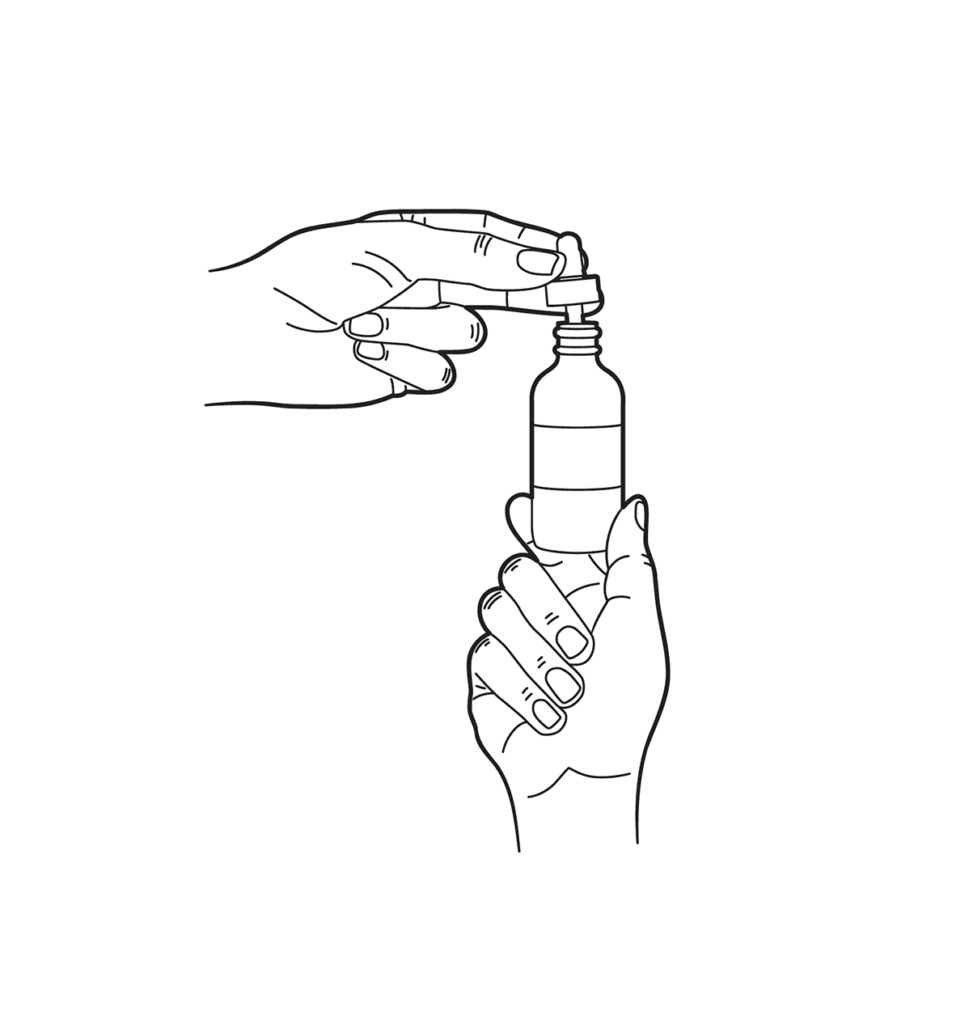
Dropper Instructions
503A vs 503B
- 503A pharmacies compound products for specific patients whose prescriptions are sent by their healthcare provider.
- 503B outsourcing facilities compound products on a larger scale (bulk amounts) for healthcare providers to have on hand and administer to patients in their offices.
Frequently asked questions
Our team of experts has the answers you're looking for.
A clinical pharmacist cannot recommend a specific doctor. Because we are licensed in all 50 states*, we can accept prescriptions from many licensed prescribers if the prescription is written within their scope of practice and with a valid patient-practitioner relationship.
*Licensing is subject to change.
Each injectable IV product will have the osmolarity listed on the label located on the vial.

Given the vastness and uniqueness of individualized compounded formulations, it is impossible to list every potential compound we offer. To inquire if we currently carry or can compound your prescription, please fill out the form located on our Contact page or call us at (877) 562-8577.
We source all our medications and active pharmaceutical ingredients from FDA-registered suppliers and manufacturers.

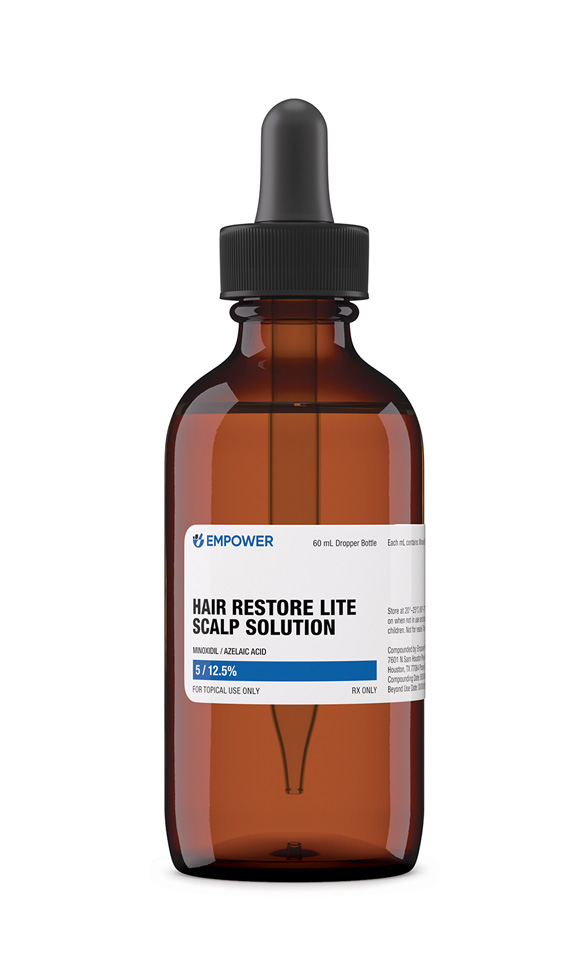
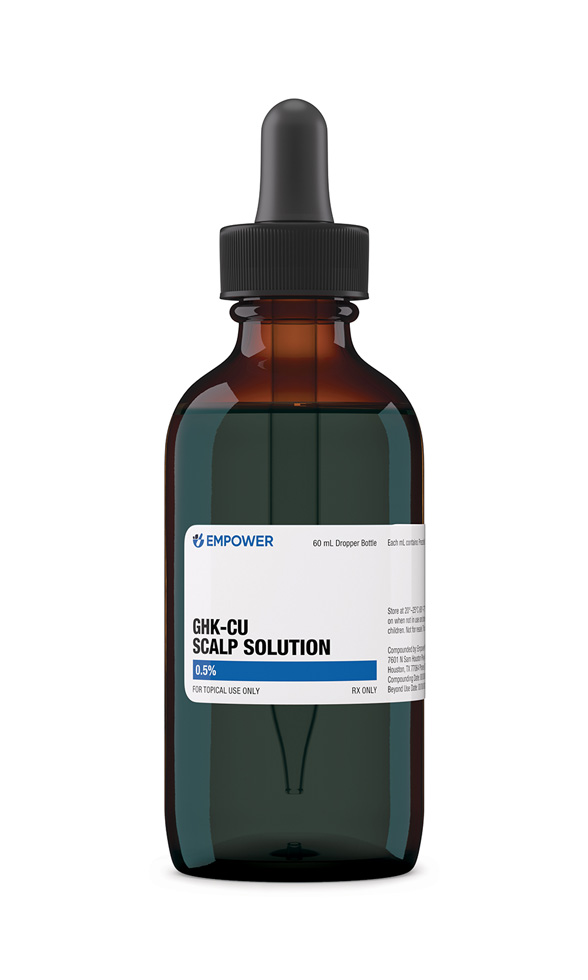 GHK-Cu Scalp Solution
GHK-Cu Scalp Solution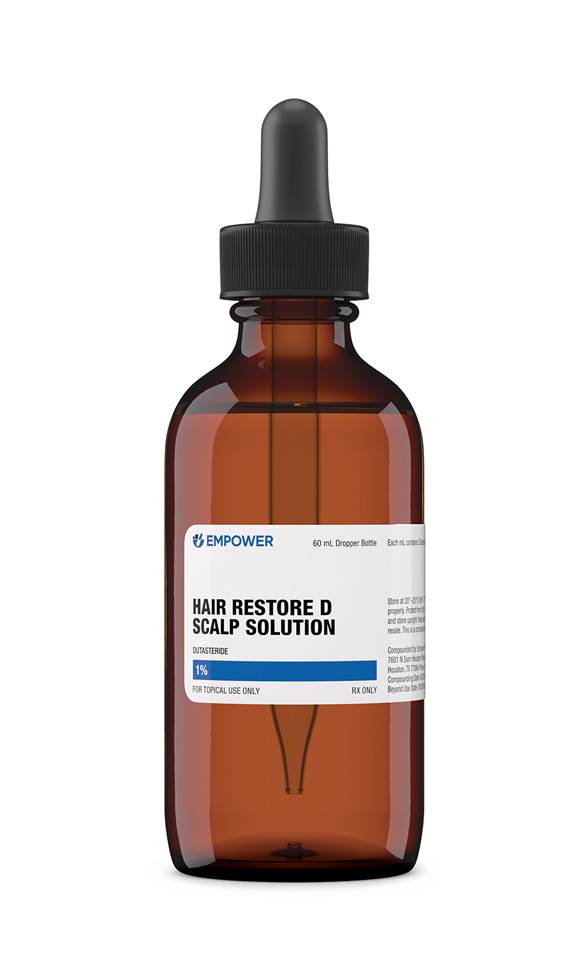 Hair Restore D Scalp Solution
Hair Restore D Scalp Solution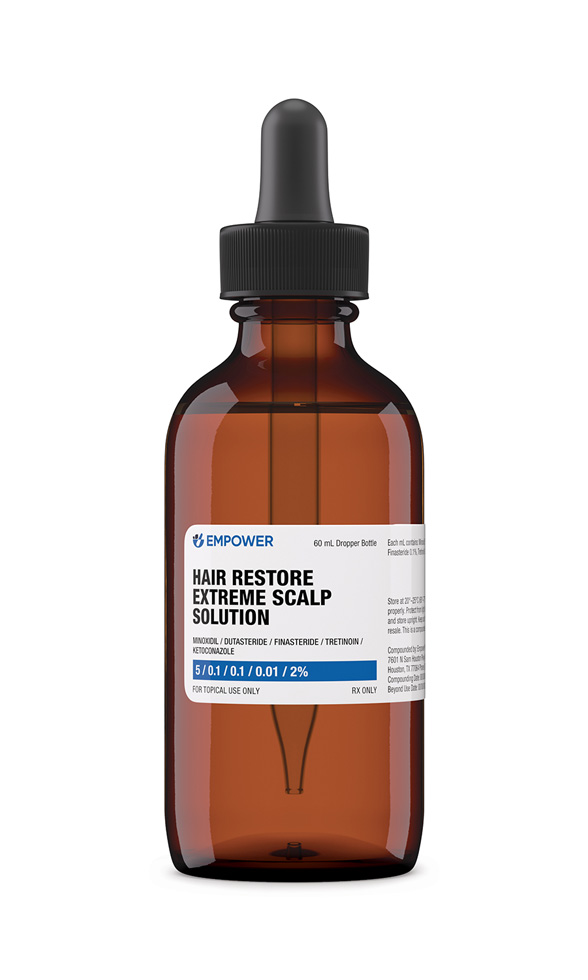 Hair Restore Extreme Scalp Solution
Hair Restore Extreme Scalp Solution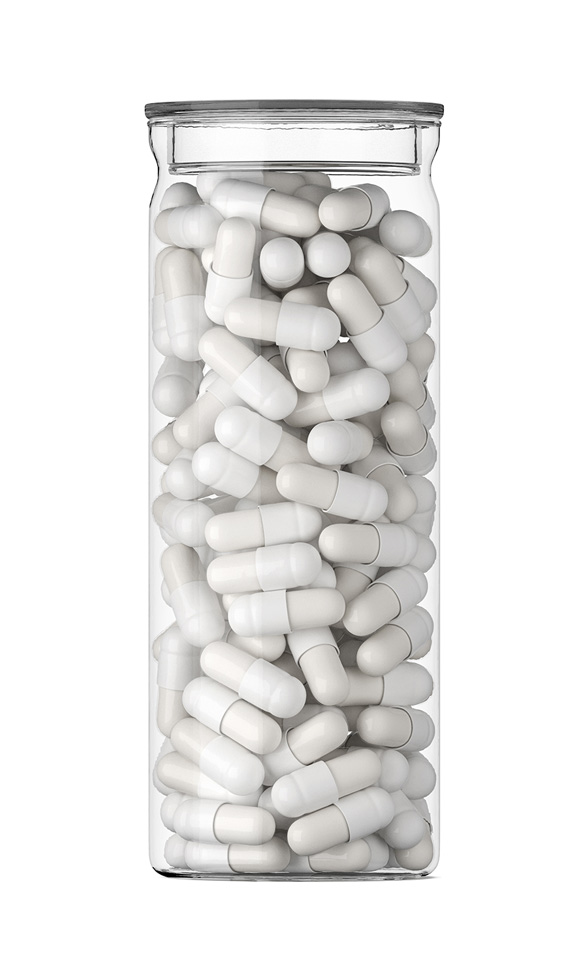 Minoxidil Capsules
Minoxidil Capsules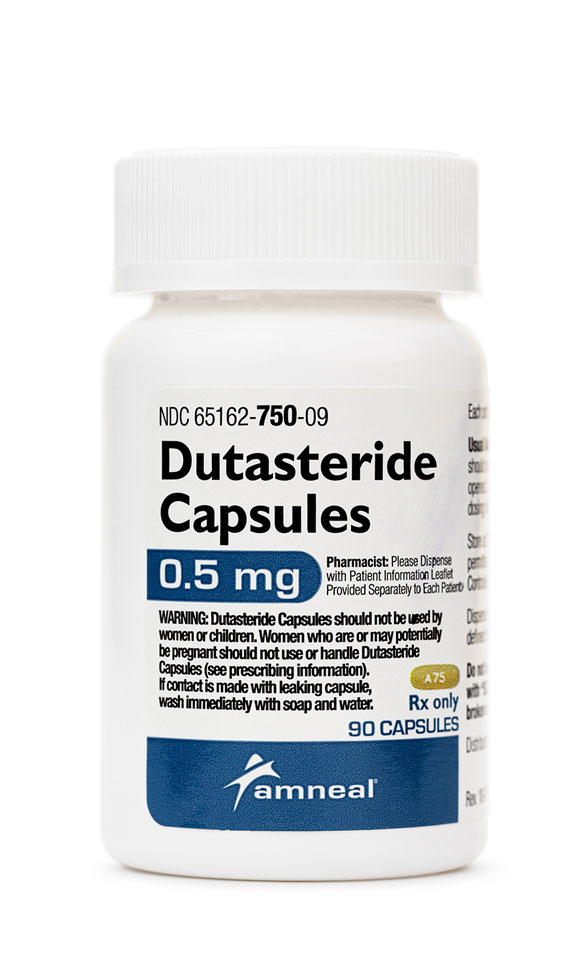 Dutasteride Capsules
Dutasteride Capsules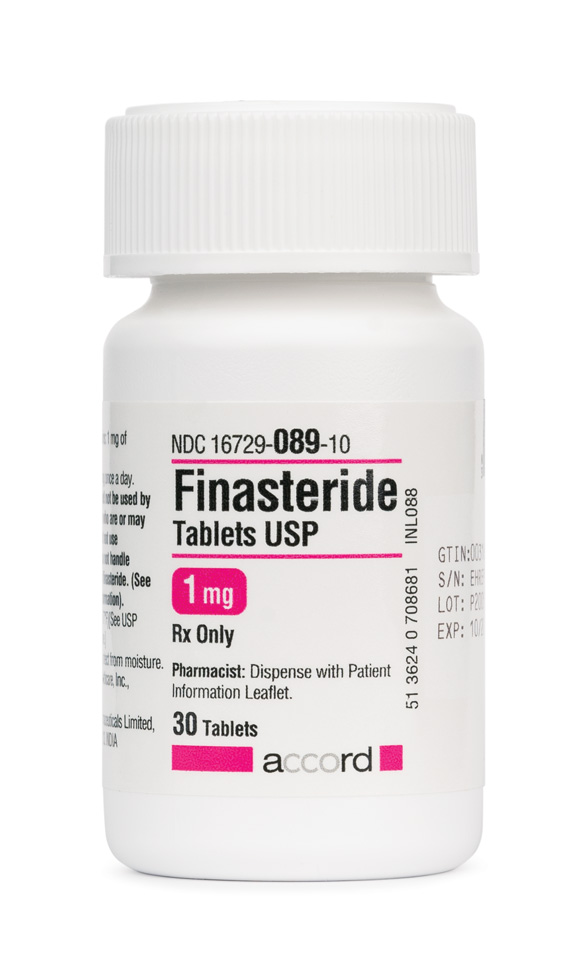 Finasteride Tablets
Finasteride Tablets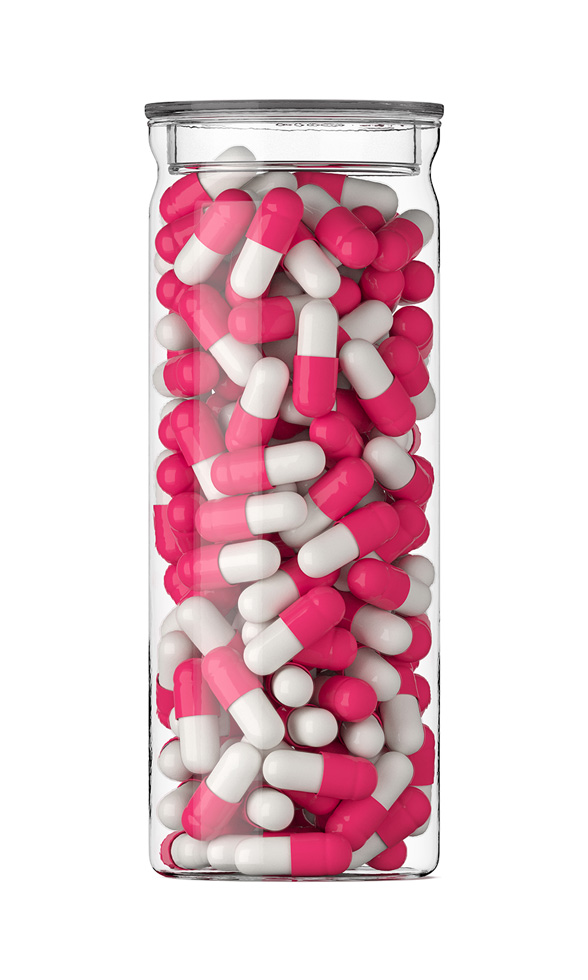 Biotin / Minoxidil / Spironolactone Capsules
Biotin / Minoxidil / Spironolactone Capsules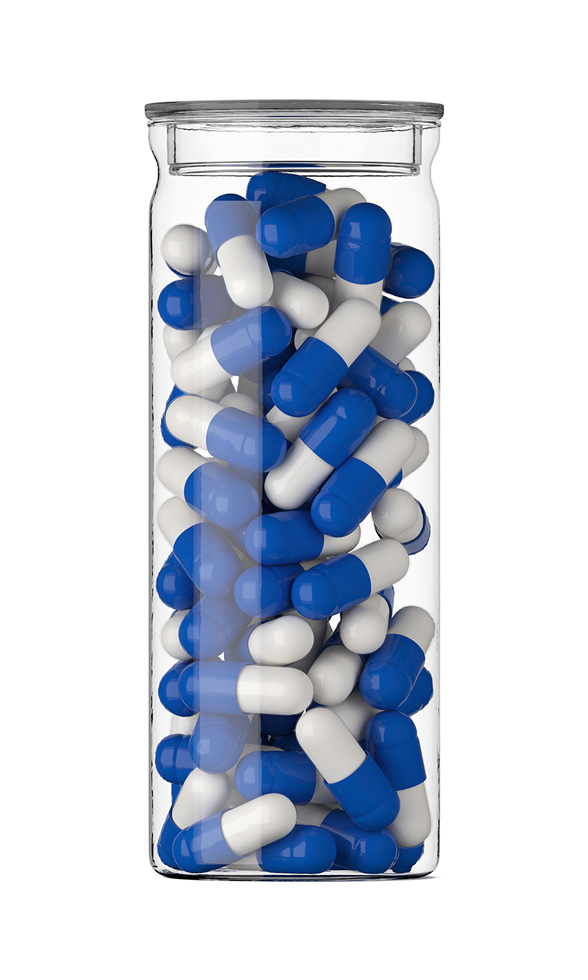 Biotin / Minoxidil Capsules
Biotin / Minoxidil Capsules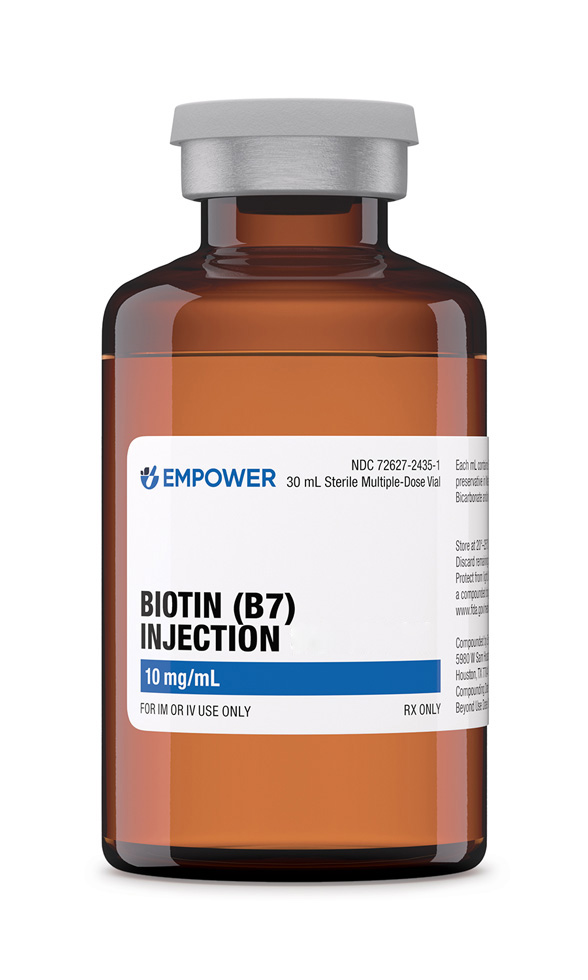 Biotin (Vitamin B7) Injection
Biotin (Vitamin B7) Injection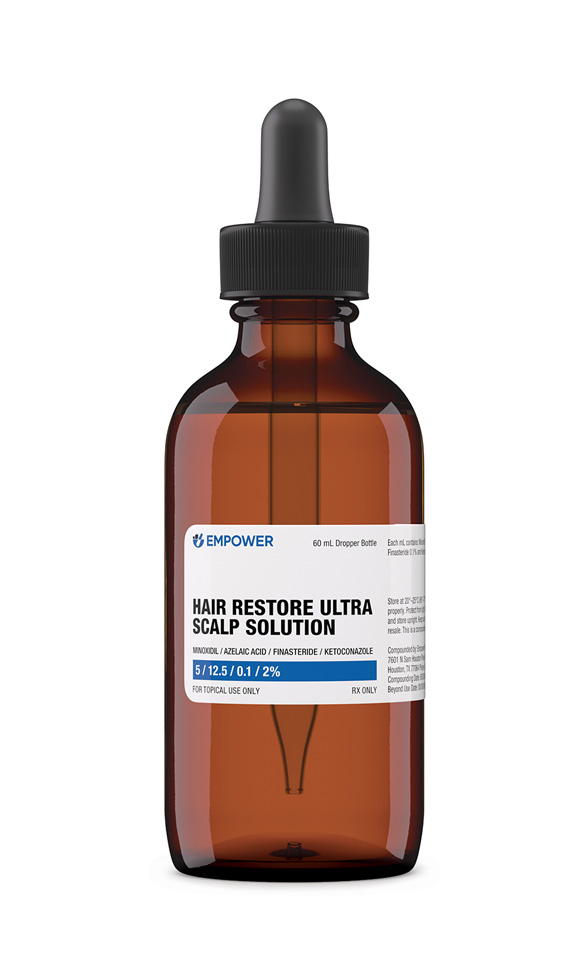 Hair Restore Ultra Scalp Solution
Hair Restore Ultra Scalp Solution